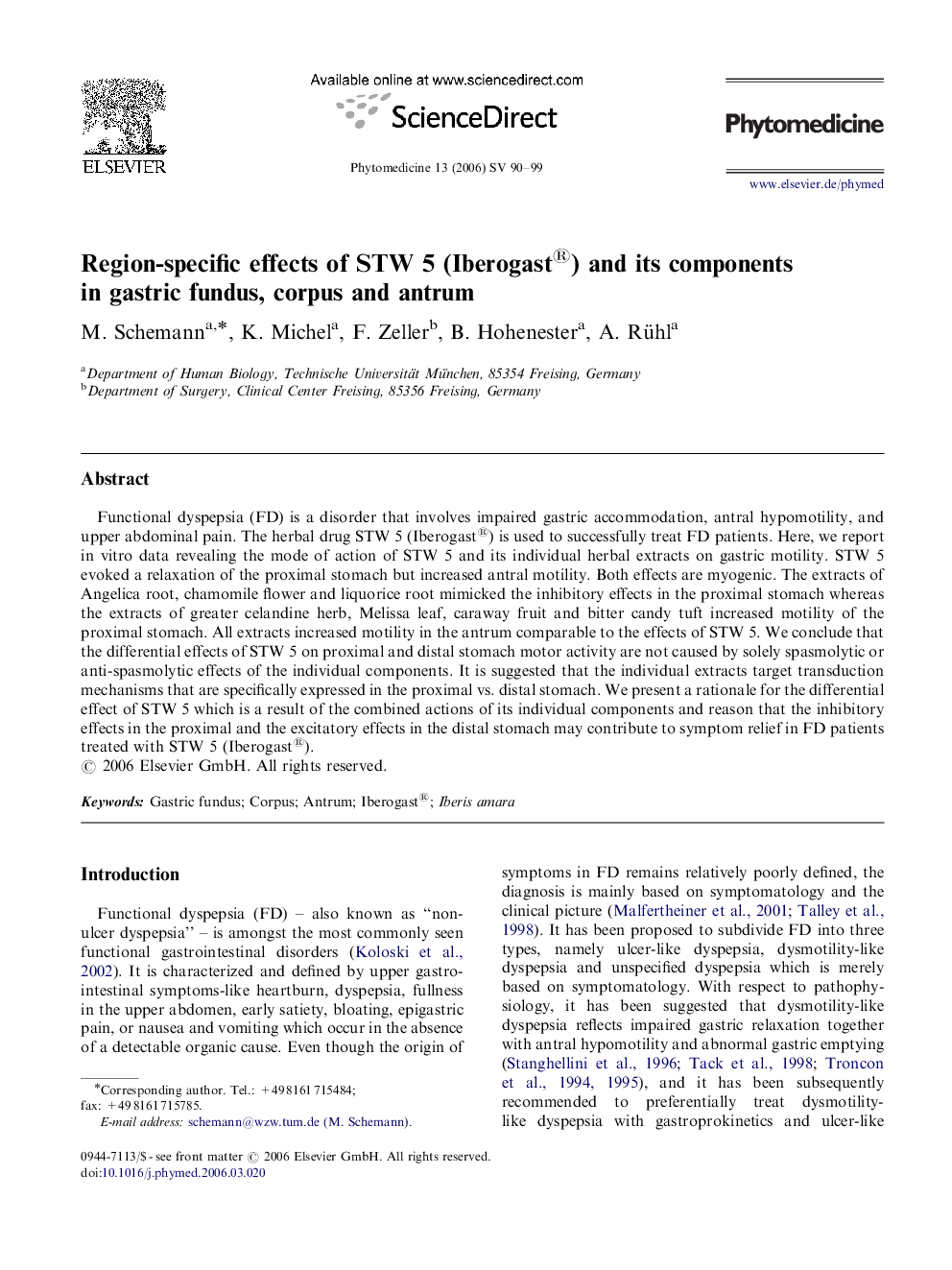| Article ID | Journal | Published Year | Pages | File Type |
|---|---|---|---|---|
| 2498146 | Phytomedicine | 2006 | 10 Pages |
Functional dyspepsia (FD) is a disorder that involves impaired gastric accommodation, antral hypomotility, and upper abdominal pain. The herbal drug STW 5 (Iberogast®) is used to successfully treat FD patients. Here, we report in vitro data revealing the mode of action of STW 5 and its individual herbal extracts on gastric motility. STW 5 evoked a relaxation of the proximal stomach but increased antral motility. Both effects are myogenic. The extracts of Angelica root, chamomile flower and liquorice root mimicked the inhibitory effects in the proximal stomach whereas the extracts of greater celandine herb, Melissa leaf, caraway fruit and bitter candy tuft increased motility of the proximal stomach. All extracts increased motility in the antrum comparable to the effects of STW 5. We conclude that the differential effects of STW 5 on proximal and distal stomach motor activity are not caused by solely spasmolytic or anti-spasmolytic effects of the individual components. It is suggested that the individual extracts target transduction mechanisms that are specifically expressed in the proximal vs. distal stomach. We present a rationale for the differential effect of STW 5 which is a result of the combined actions of its individual components and reason that the inhibitory effects in the proximal and the excitatory effects in the distal stomach may contribute to symptom relief in FD patients treated with STW 5 (Iberogast®).
